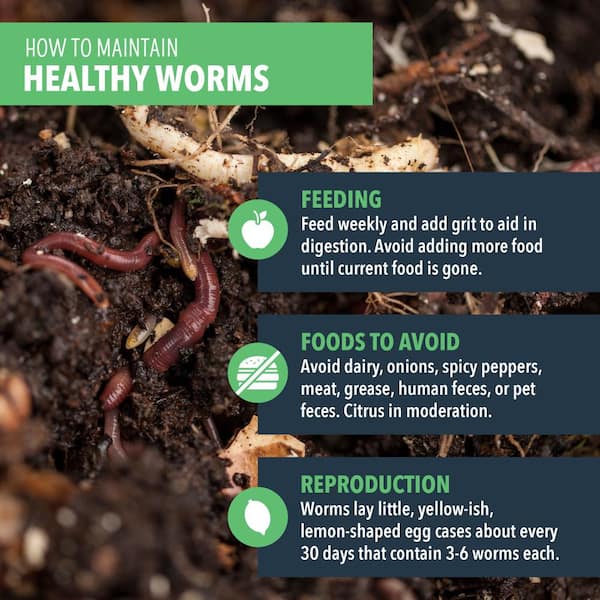The Best Strategy To Use For North Carolina Worms
Table of ContentsWhat Does North Carolina Worms Do?The Ultimate Guide To North Carolina WormsThe 8-Minute Rule for North Carolina WormsThe 15-Second Trick For North Carolina Worms
Instance: 1-gallon of worm spreadings to 4 gallons of potting mix. 1/2 cup in the base of the growing hole for smaller sized plants. 1 cup for larger plants.
The addition of tea can also include boosted microbial biomass to your soil. You can constantly side-dress your plants with worm spreadings at any time. Simply keep in mind, the microorganisms will certainly pass away if revealed to UV rays (Sunlight), so be sure to cover the castings with an inch approximately of soil.
This baffled them for years till the testing approaches became much better. It would certainly get far better(with more castings), degree off, and then decline. Also numerous worm spreadings would certainly accelerate the development to a rate that the plant could not recuperate from.
About North Carolina Worms
I have clarified the merits of worm spreadings for regarding 2000 words. Worm castings are no different. It takes time to create quality worm castings.
You can purchase them which results in second. Worm castings certainly set you back even more than chemical plant foods. Worm spreadings are on the less costly end of natural plant foods. You will have to decide what is more crucial. It is simple to create percentages of worm spreadings. (50 gallons each year) It is a much harder and really expensive financial investment to generate big amounts of worm spreadings (Lake Hickory Bait).

In fact, developing a healthy and balanced dirt may be the best advantage of worm castings. Healthy and balanced dirt was gone over and just how important this has actually ended up being to everybody. The leading ten benefits of worm spreadings were likewise presented. We reviewed worm castings NPK and also the correct nutrient analysis that need to put on worm spreadings.
All about North Carolina Worms
We chatted about some of the downsides linked with worm spreadings. I covered a great deal of product in this write-up. There are a lot of links (interior and exterior). If you would certainly like more info on a specific subject, please click via the web links for more information. As always, really feel cost-free to comment or ask questions.
The upright burrows are typically open, although the worms cap the leading with deposit and waste matter. Roots need oxygen for their growth, whereas they generate carbon dioxide that requires to leave the soil.
Earthworms enhance porosity by two systems: (1) by producing long-term burrows, and (2) by boosting dirt gathering. Aggregation is improved by the blending of dirt and natural issue in the earthworms' digestive tracts. Where to buy worms in NC. These very secure aggregates are deposited by some earthworms in their burrows, and by others at the surface area of the soil


In another study, earthworms were estimated to take in 4 to 10 percent of the top 6 inches of the soil every year. Dirt compaction lowers the porosity of the dirt.
Everything about North Carolina Worms
Normal earthworm populaces can conveniently eat 2 heaps of completely dry matter per acre annually, partly absorbing and blending it with dirt. The value of earthworms to mix surface deposit with soil ends up being very clear in dirts that do not have any kind of earthworms. The majority of our Pennsylvania soils contend the very least some earthworms, and the impact of their full lack, for that reason, can not be noted.
(https://classdirectory.org/details.php?id=303572)In these soils, the development of topsoil with practical natural issue content did not happen, causing inadequate plant development. As soon as the reason was developed, the federal government of the Netherlands began a project to present earthworms. After the intro of the earthworms, a dark topsoil layer was created, and plant development boosted considerably.
They live mostly from partly disintegrated organic issue that is currently included in the soil. These types consume huge quantities of dirt that they blend with digested crop deposit in their digestive tracts.
Their burrows continue to be open, although they top the top with plant deposit that they pull to the entrance. These varieties consume considerable amounts of dirt that they combine with digested deposit in their digestive tracts. Their excrement is primarily transferred at the surface of the dirt. The nightcrawler Lumbricus terrestris is one of the most popular member of this team.